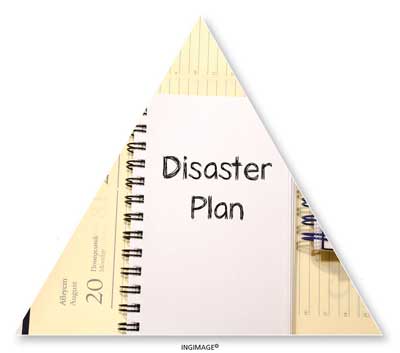CORPORATE RESILIENCE
TWIN STRATEGIES
Jayashantha Jayawardhana on twofold transformations
With the winds of creative destruction blowing incessantly, not a single business – no matter how large or stable it is – is immune to disruption from all manner of sources; some predictable, others not quite so.
While a high degree of corporate vigilance may help you keep your business from being destructed by the storm, it doesn’t necessarily guarantee that you’ll be able to maintain the status quo and keep your business afloat.
When change beckons – whether it is market shifts, groundbreaking technologies or disruptive startups – your business has to transform itself. How that transformation is achieved depends on corporate resilience.
Writing in Harvard Business Review (HBR), Clark Gilbert, Matthew Eyring and Richard Foster – in their article titled Two Routes to Resilience – said: “Transformation A should reposition the core business, adapting its current business model to the altered marketplace. Transformation B should create a separate disruptive business to develop the innovations that will become the source of future growth.”
Dual transformation is achievable only through what is called ‘capabilities exchange’: a new organisational process through which parallel endeavours can share certain resources without changing the mission or operations of either.
When such a transformation model is adopted, the new strategy won’t have to bear the full burden of making up for the core business lost to the disruption. It’ll also allow sufficient time for the new business to grow. While it may take some serious strategic planning and quality executive attention initially, two parallel transformation efforts are more likely to yield better results than one.
A case in point is the IT behemoth IBM. In the mid-1990s, IBM revamped its mainframe business, switching from proprietary systems to servers running software based on open standards. Simultaneously, it developed a separate global services organisation that became the source of future growth.
Likewise, Barnes & Noble adopted a similar approach in response to the severe disruption from eBooks, as did Xerox in the face of the slow but steady decline of its photocopier business and Deseret News in response to the challenges posed by the internet.
Clark Gilbert, coauthor of the quoted HBR article, was the CEO of Deseret News Publishing and Deseret Digital Media at the time. He had thus overseen the twofold transformation taking place at Deseret News.
The Salt Lake City based Deseret News was founded by Mormon pioneers in 1850 and for 150 years, it had run well under the traditional newspaper model. For a monthly fee, subscribers received a daily paper filled with articles on a broad range of subjects – e.g. local and national news, arts, sports, entertainment and more. Local advertisers paid to reach this audience through display ads, classifieds and coupon inserts.
Deseret News then experienced disruption following a fall in revenue. The explosive growth of news websites offering free content became more appealing to its readership. Since advertising rates are pegged to circulation, declining readership undercut all revenue streams at once. Between 2008 and 2010, the Deseret News lost almost 30 percent of its print display ad revenue and a shocking 70 percent of classified revenue.
As the company mulled over the problem, it struck management that while the print newspaper business was in dire straits, the situation wasn’t entirely hopeless. So it resolved that the newspaper should stay in print and also go digital.
Its ‘Transformation A’ was to publish a leaner local print newspaper providing in-depth coverage of issues concerning families and faith, supplemented by a similarly focussed weekly targeting a national audience, which could attract higher margin national ads.
In the meantime, ‘Transformation B’ was Deseret Digital – a collection of websites that captured the lower margin, higher volume opportunities that the greater reach of the internet makes possible. The two businesses shared the brand, editorial content and marketing resources, in addition to demographic and behavioural data about subscribers and site visitors.
The transformation efforts turned Deseret News into one of the nation’s fastest growing print newspapers while Deseret Digital accounted for about a quarter of the company’s revenue.
Indeed, the dual transformation model can be effective for any type of business. The sooner you identify the disruption, the better your chances are to respond well with a viable counter-strategy. Never succumb to complacency no matter how prosperous and impregnable your enterprise may seem to be. Instead, cultivate corporate resilience because disruption is around the corner – if only a little out of sight.




